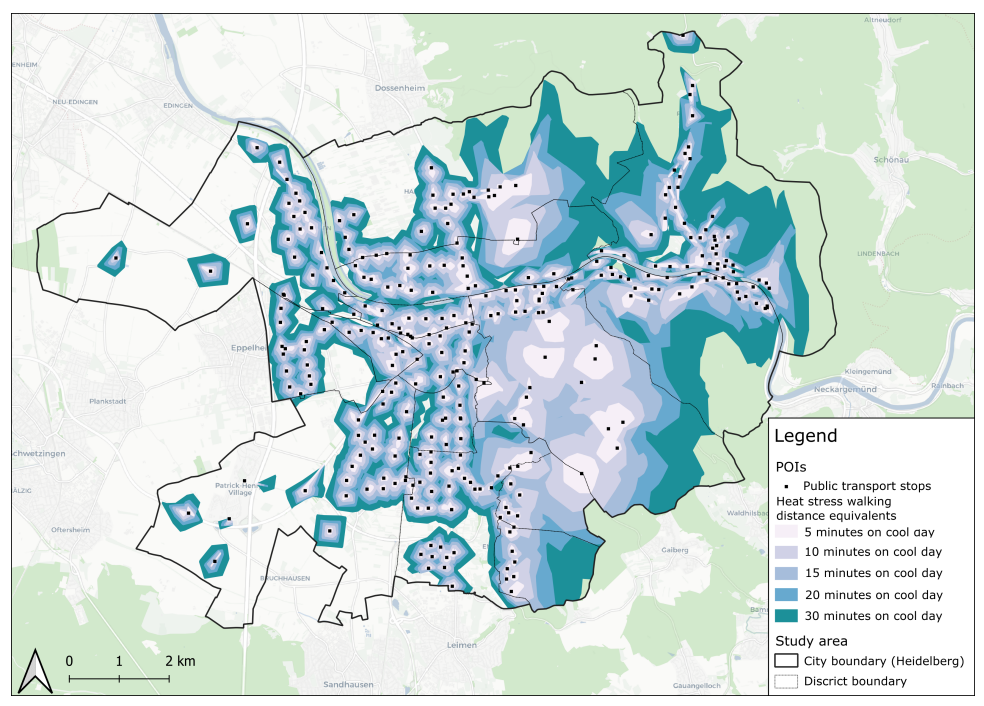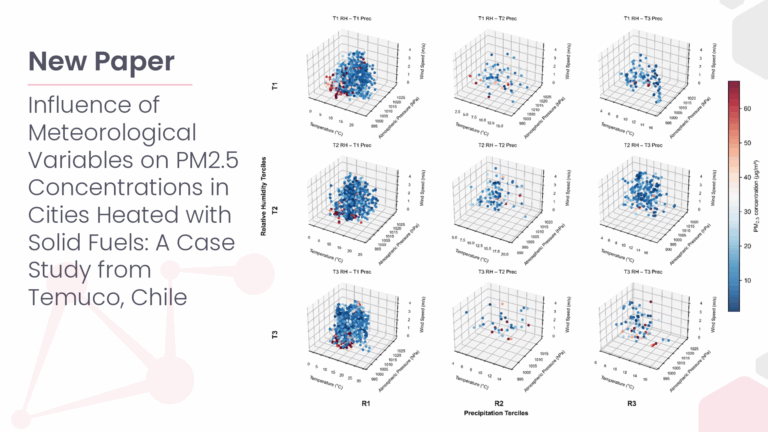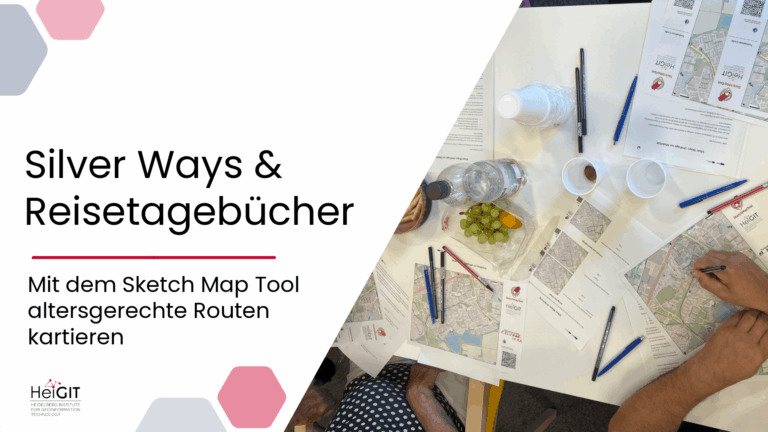This study introduces the isocalor approach to assess how solar exposure and heat stress impact pedestrian access to essential services in Heidelberg, using OpenStreetMap data and a customized openrouteservice routing engine.
As climate change intensifies, cities are increasingly exposed to extreme heat events, with urban populations—especially vulnerable groups like older adults, children, and those with chronic illnesses—facing heightened health risks. In Germany, the frequency of hot days has more than doubled since the late 20th century, a trend exacerbated in urban environments by the urban heat island effect.
A recent study, conducted within the framework of the HEAL project, investigates how heat stress affects the accessibility of essential services in Heidelberg. Using the isocalor method—an adaption of the isochrone approach that incorporates heat sensitivity and solar exposure—the study quantifies reductions in service accessibility under varying heat stress levels.
At the core of the methodology is a customized instance of the openrouteservice routing engine, which has been adapted to account for solar exposure. Instead of calculating the shortest or fastest routes, the modified routing service suggests pedestrian paths that minimize sun exposure, even if this involves small detours. The analysis relies on geospatial data extracted from OpenStreetMap, including pedestrian pathways and attributes such as access restrictions, traffic barriers, and surface types. These are processed into a routing graph, where roads and paths are modeled as edges between intersection nodes. Each edge is enriched with distance data and time-specific solar exposure values, which are calculated and linked via OSM-ID during pre-processing.
Using this enriched routing graph, the research performs reachability analyses under varying heat stress conditions, identifying how accessible essential services are when accounting for individual pedestrian vulnerability to heat. The results indicate that under high heat stress conditions, nearly one-quarter (23.8%) of Heidelberg’s population faces reduced access to key services such as healthcare, food, and mobility infrastructure. These accessibility limitations are especially pronounced in districts with low public transport density and high solar exposure. Even under moderate heat stress, 6% of the population is affected.
The research was presented at the 28th AGILE Conference on Geographic Information Science, 10–13 June 2025.
Full paper: Huber, J., Ludwig, C., Foshag, K., Kolaxidis, N., Zipf, A., & Lautenbach, S. (2025). Accessibility for pedestrians under heat stress: The example of Heidelberg, Germany. AGILE: GIScience Series, 6, 4. AGILE-GISS – Accessibility for pedestrians under heat stress – the example of Heidelberg, Germany
Title image: Areas accessible for different heat stress walking distance equivalents. Parameter: heat sensitivity factor = 5, time of day: afternoon (16:00 h CEST), Day 190 (July 8th/9th). The walking distance is provided as the equivalent for a hot day – i.e. for the chosen day walking distances were shorter due to the heat stress. Data source: OSM Contributors, Map Style by CartoDB.





